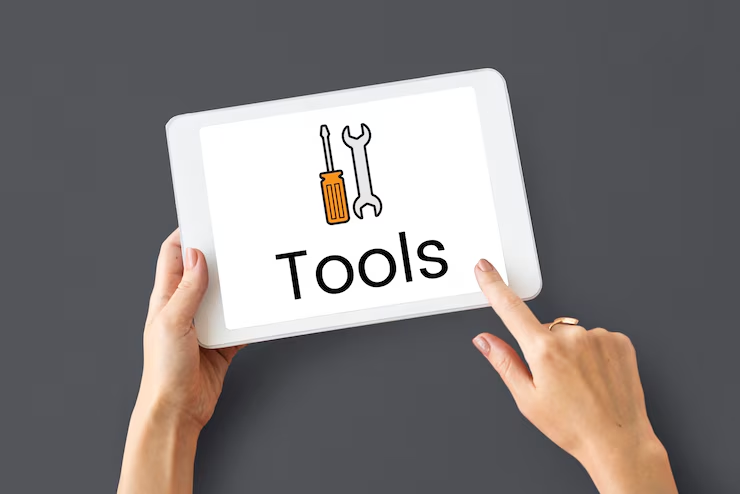Table of Contents
Introduction

Affiliate marketing is a smart income source. No need to create your own product, no need to maintain inventory — just promote someone else’s product and earn commission when a sale happens.
It’s a win-win deal – companies get visibility and sales, and you (as an affiliate) get paid per sale. Platforms like websites, blogs, or even YouTube channels can join affiliate programs and promote quality brands.
For example, bloggers earn money by writing honest reviews, step-by-step guides, product comparisons, or tutorials on products they love and use. This method is not only budget-friendly for companies, but also profitable for bloggers.
As Michelle Nguyen from UpPromote explains, “Affiliates get paid only when a sale is made – this way, businesses reach new customers, and bloggers open new income streams.”
If you’re planning to make extra income or even go full-time with affiliate marketing, this blog will guide you step-by-step on how to start, grow, and succeed.
How Blogging Helps You Succeed in Affiliate Marketing

While platforms like TikTok and YouTube are good for promoting products, the content posted there usually fades away quickly. That means it becomes harder to get long-term results or continuous sales. On the other hand, blogs and websites are perfect for long-lasting content — known as evergreen content — that stays online and keeps attracting visitors for months or even years.
That’s why many experts believe blogs are the best place for affiliate marketing.
“Blogs bring organic traffic through SEO. With detailed content like reviews, tutorials, or how-to guides, blogs help your website show up in search engines and reach the right people.”
The biggest advantage? Once your blog is well-optimized for search engines (SEO), you can get free traffic consistently without paying for ads. Your readers will keep finding your helpful content, and if they like what they see, they’ll click on your affiliate links and make purchases — earning you a commission.
Michelle Nguyen from UpPromote also adds that blogs give more control. You can place affiliate links smartly, add buttons or banners, and track which products are working best.
“Websites make it easier to place call-to-action buttons and track how people interact with your content,” she explains. “That helps increase conversions and boost your earnings.”
In short, affiliate marketing and blogging work best together because:
- Blogs attract organic traffic through SEO
- You can track, test, and improve performance
- It’s easier to build trust with readers through valuable content
5 Easy Steps to Start Your Affiliate Blog
If you want to make money with affiliate marketing, starting a blog is a great way to begin. Here’s how to do it step by step:

1. Choose Your Niche (Topic)

The first and most important step is picking the right niche — the main topic your blog will focus on. It could be anything you’re passionate about, like technology, fitness, personal finance, fashion, or food.
When you choose something you truly care about, your content will feel more genuine — and people trust that. Plus, you’ll enjoy writing about it more!
A clear niche helps you know who your audience is and what products they’ll be interested in. That makes affiliate marketing much easier.
2. Set Up Your Blog Website

Once you’ve picked your niche, it’s time to create your blog. There are free platforms like Blogger, Substack, or Wix — great for beginners. But if you’re very serious to make money with affiliate marketing, WordPress is Best choice.
Why WordPress?
- It gives you full control over your website
- You can install SEO tools and design plugins
- It looks professional and helps build trust
You’ll need to:
- Choose a blog name (domain)
- Buy the domain (from websites like GoDaddy – costs around ₹800–₹1500/year)
- Set up hosting
It’s a small investment that pays off long-term.
3. Join Affiliate Programs

Now that your blog is ready, it’s time to sign up for affiliate programs — these give you links to share products and earn commissions.
When picking a program, look at:
- Are the products a good fit for your audience?
- How much commission will you earn per sale?
- Do they offer good tools to track clicks and sales?
Some popular programs for beginners:
- Amazon Associates – easy to join, huge variety of products
- ShareASale
- CJ Affiliate
- UpPromote (for Shopify users)
Be careful of shady programs. Avoid those with no clear payment info, poor reviews, or fake promises.
4. Write Helpful, Quality Content

Now comes the fun part — creating blog posts! This is where you review products, write tutorials, share buying guides, and include your affiliate links.
Here’s what your content should be:
- Easy to read and error-free
- Genuinely helpful to your audience
- Optimized with relevant keywords for SEO
- Filled with clear calls to action (like “Click here to buy”)
The more useful and trustworthy your content is, the more readers will click and buy.
5. Always Be Transparent

Before you publish any post with affiliate links, add a clear disclosure. This is important for trust — and for legal reasons too.
Add a small note at the top like:
“This post contains affiliate links. If you buy something through my link, I will earn a small commission at no extra cost to you for that product.”
Being honest with your readers builds trust and keeps you safe from breaking any rules.
Smart Marketing Strategies for Your Affiliate Blog

Now that your blog is set up and you’ve joined affiliate programs, it’s time to attract readers and boost your earnings. Here are 4 simple yet powerful strategies to grow your affiliate blog:
1. Optimize Your Blog for SEO

SEO (Search Engine Optimization) means making your blog posts easy to find on Google. The best way to do this is by writing content that answers real questions people search for.
Example: If your niche is skincare, you can write posts like:
- “Best face creams for dry skin in summer”
- “How to treat acne naturally at home”
Use tools like Ubersuggest, SEMrush, or Ahrefs to find popular keywords people search for, and include them naturally in your content.
Tip: Always focus on helping the reader — not just selling a product. Helpful content = long-term traffic.
2. Build an Email List

It helps you:
- Stay connected with your audience
- Promote new blog posts or offers
- Drive traffic back to your blog regularly
One great way to get people to sign up? Run giveaways or contests and ask for their email to enter. People love free stuff — and you’ll grow your list fast!
Then, send weekly or monthly emails with tips, deals, or product updates.
3. Add Strong CTAs (Call-To-Actions)

Want people to click your affiliate links? Tell them what to do next!
Use short, clear buttons or phrases that encourage action. These are called CTAs (Call to Actions). Place them in your blog posts where they make sense.
Examples:
- “Buy Now”
- “Check Price on Amazon”
- “Sign Up for Free”
- “Claim Your Offer Today”
- “Learn More Here”
Pro Tip: Make sure CTAs stand out using bold fonts or colored buttons — this improves clicks!
4. Share Your Blog on Social Media

Once you’ve written some helpful posts, don’t keep them hidden — share them everywhere!
Pick a few social platforms like:
- Instagram (great for visuals)
- Facebook (good for groups and sharing)
- TikTok (great for short tips and links in bio)
Post regularly and use hashtags related to your topic like #HealthyLiving, #BudgetGadgets, or #TechReviews to reach more people.
Don’t forget to ask your followers to sign up for your email list too!
How Much Money Can You Make With Affiliate Marketing?

If you’re wondering whether affiliate marketing is worth it — the answer is yes. Many bloggers are making real money from their blogs.
According to a survey by Affise:
- Over 25% of affiliate marketers earn between $81,000 and $200,000 per year!
- Others earn less or more, depending on things like traffic, niche, and content quality.
What Can Beginners Expect?

In the beginning, you might earn just a few hundred dollars each month — and that’s completely normal. But don’t let that stop you! 🌟
As Peter Lewis, a marketing expert, explains:
“The more blog posts you write, the better your SEO becomes, and the more your income grows.”
Over time, as you build trust with your readers and write helpful content, you can start earning $5,000 to $20,000+ every month, especially if you’re in popular niches like:
- Tech gadgets
- Online finance
- Digital tools
- Software reviews
These are called high-ticket niches because they offer bigger commissions per sale.
So, What’s the Secret to Earning More?
It’s not luck. It’s consistency. 💪
Keep posting helpful content, use smart keywords, build an email list, and recommend products you truly believe in.
The more value you give, the more your blog becomes a trusted place — and that’s when affiliate sales start growing fast!
Where to Find Affiliate Partners

Ready to earn through affiliate marketing? First, you need to join affiliate programs that match your blog’s topic. Here are some of the best platforms to find affiliate partners
1. Amazon Associates (Best for Beginners)
If you’re just getting started, Amazon Associates is a great place to begin.
- Easy to join — sign up, fill a short application, and you’re in!
- You can promote any product on Amazon and earn a small commission on each sale.
- Track your clicks and sales easily as you learn and grow.
Perfect for bloggers in any niche — from books and electronics to home décor and beauty.
2. ShareASale (Great for Niche Blogs)
Looking for higher commissions or more focused products?
- ShareASale connects you with hundreds of brands in specific categories like fashion, health, tech, and more.
- Commission rates are often better than Amazon.
- You’ll need to apply and get approved, so it helps if your blog already has some content.
Tip: Build a few helpful blog posts first, then apply!
3. CJ Affiliate (Top Choice for Big Brand Deals)
Want to work with well-known global brands?
- CJ Affiliate gives chance to top companies worldwide.
- Advanced tools to track performance and improve sales.
- Approval needed — some brands might only accept bloggers with a solid audience and niche.
Best for bloggers who already have good traffic or followers.
4. OfferVault (Find & Compare Affiliate Deals Easily)
OfferVault is more like a search engine for affiliate offers.
- You can browse hundreds of affiliate programs in one place.
- See commission rates and details upfront.
- Reach out to brands directly and apply to the programs that fit your niche.
Great for any skill level — whether you’re new or experienced.
What to Look For in Affiliate Programs for Bloggers
Not all affiliate programs are created equal. To choose the right one for your blog, here are the top things to consider before joining:
1. Commission Structure
This is how much money you’ll earn for every sale or action your link generates.
- Basic programs like Amazon Associates offer 1%–3% — good for beginners.
- More advanced or niche programs may offer 10% to 30% or more!
Tip: Choose programs with higher payouts for fewer sales or combine low and high-ticket products to balance income.
2. Relevance to Your Audience
Your readers will only click and buy if the product matches their interests.
- Ask yourself: “Would my audience find this useful?”
- Example: A fitness blog might promote protein powders, not tech gadgets.
Stick to your niche to build trust and drive more conversions.
3. Cookie Duration
A “cookie” tracks how long someone’s purchase will count for your commission after they click your link.
- Some last just 24 hours (like Amazon).
- Others last 30 days or more — more time = more chances to earn.
Look for programs with longer cookie windows (like Shopify’s 30-day cookie).
4. Reporting & Analytics
- Key metrics: Clicks, conversions, traffic sources, top-performing products
- Extra features to look for:
- Geolocation data (where your audience is)
- Device tracking (mobile vs. desktop)
- Time-based reports (when people are buying)
- This data helps you optimize future content and boost income.
5. Ease of Integration with Your Blog
Your affiliate program should work well with your blog platform — especially as you grow.
- For example, WordPress has helpful plugins to manage affiliate links.
- Some programs even let you auto-update prices and product info.
Choose tools that make link management fast and flexible, especially if you plan to scale.
Helpful Online Tools for Affiliate Marketers

Affiliate marketing becomes easier (and more profitable) when you use the right tools. Here’s a list of must-have tools that help with SEO, link management, and email marketing — everything you need to grow and monetize your blog effectively.
Ahrefs (Free & Paid)
What it does:
- SEO keyword research
- Backlink analysis
- Website performance tracking
Why it’s great: Ahrefs helps you discover which keywords to target and what content is driving traffic — perfect for ranking higher on Google.
Semrush (Starts at $139.95/month)
What it does:
- Competitor keyword analysis
- Content planning tools
- Search intent discovery
Why it’s great: If you’re serious about SEO and can invest in your blog, Semrush helps you create content that answers exactly what your audience is searching for.
Pretty Links (Starts at $99.60/year)
What it does:
- Shortens long affiliate links
- Creates branded, trackable URLs
- Works smoothly with WordPress
Why it’s great: It makes your affiliate links cleaner, more clickable, and easier to manage — perfect for beginners.
Mailchimp (Free up to 500 subscribers, Paid plans from $20/month)
What it does:
- Email campaign creation
- A/B testing
- Advanced automation features
Why it’s great: Offers beautiful email designs and testing tools to increase your open rates and drive more affiliate clicks — ideal for bloggers with larger lists.
Conclusion:
With the right strategies, such as choosing relevant affiliate programs, creating SEO-optimized content, building an email list, and promoting through social media—you can steadily grow your blog and your earnings.
FAQ’s
1: How do affiliate marketers get paid?
Affiliate marketers earn money through commissions. When someone clicks on an affiliate link and makes a purchase, the blogger earns a percentage of that sale. The exact amount depends on the affiliate program and the product being promoted. Some pay per sale, while others offer pay-per-click or pay-per-lead models.
2: Is affiliate marketing suitable for beginners?
Yes, affiliate marketing is a great starting point for beginners. It requires minimal upfront investment, and many programs like Amazon Associates are easy to join. With consistent content creation, smart promotion, and basic SEO skills, even new bloggers can start earning passive income.
3: Do I need a website to start affiliate marketing?
Technically, no ut having a website or blog is highly recommended. A dedicated platform allows you to build trust, optimize for SEO, and promote products in a structured way. It also helps when applying to higher-paying affiliate programs that require a solid online presence.
